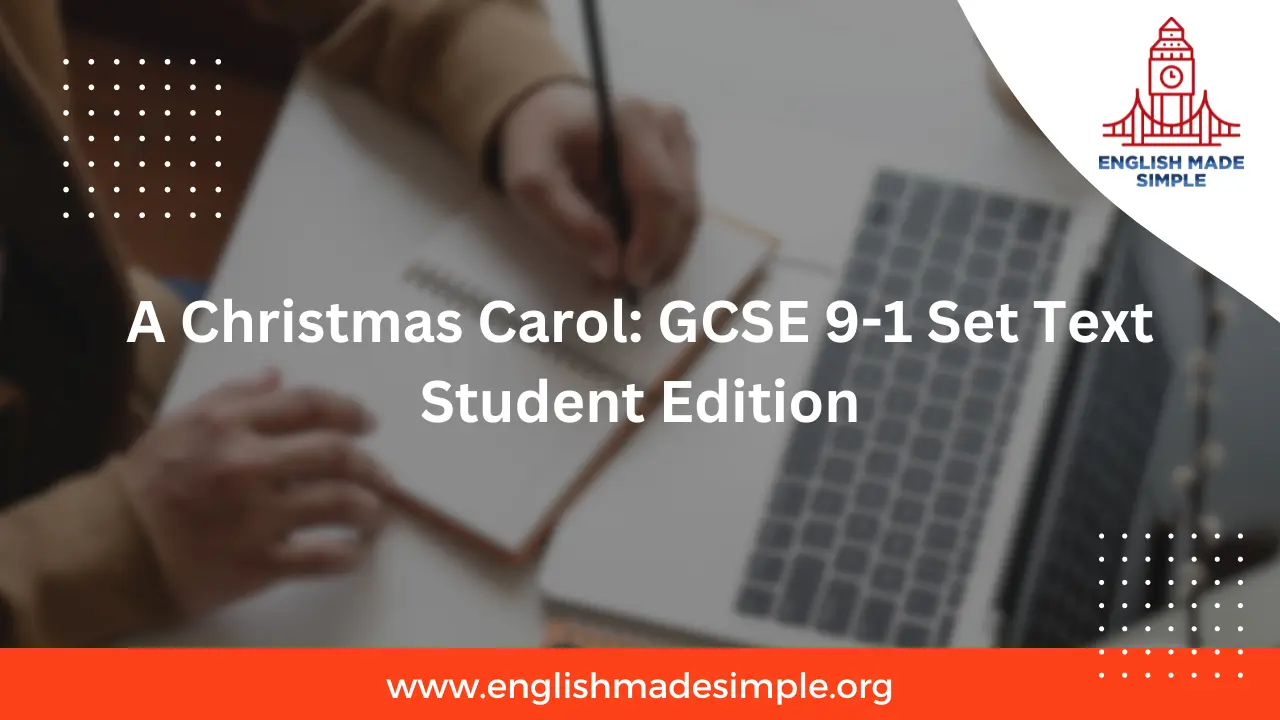
A Christmas Carol: GCSE 9-1 Set Text Student Edition
Charles Dickens’ novella “A Christmas Carol” is a timeless classic that continues to resonate with readers of all ages. For GCSE students studying this text, it offers a rich tapestry of themes, characters, and literary techniques to explore. Here’s a detailed breakdown to help you navigate and analyze this significant work effectively.
Introduction to “A Christmas Carol”
“A Christmas Carol,” published in 1843, tells the story of Ebenezer Scrooge, a miserly old man whose life is transformed after encounters with ghosts on Christmas Eve. Dickens uses this narrative to critique Victorian society’s treatment of the poor, advocate for social reform, and celebrate the spirit of Christmas.
Key Themes Explored
Redemption and Transformation:
- The central theme revolves around Scrooge’s journey from a cold-hearted, selfish individual to a compassionate and generous benefactor. This transformation is catalyzed by visits from the Ghosts of Christmas Past, Present, and Yet to Come, who show him the consequences of his actions.
Social Injustice and Poverty:
- Dickens vividly portrays the plight of the poor through characters like Bob Cratchit and his family. The novella critiques the indifference of the wealthy towards the less fortunate and calls for social responsibility and empathy.
Family and Community:
- Through Scrooge’s reconnection with his nephew Fred and the Cratchit family’s resilience, Dickens highlights the importance of familial bonds and communal support during festive times.
Character Analysis
Ebenezer Scrooge:
- Initially depicted as miserly and misanthropic, Scrooge undergoes a profound change. His character development serves as a moral lesson about the power of self-reflection and redemption.
Bob Cratchit:
- As Scrooge’s underpaid and overworked clerk, Bob symbolizes the struggles of the working class. His devotion to his family, despite financial hardship, emphasizes resilience and love.
The Ghosts:
- Each ghost represents a different aspect of Scrooge’s past, present, and future. They serve as catalysts for his transformation by forcing him to confront his own choices and their consequences.
Literary Techniques and Devices
Symbolism:
- The novella is rich in symbolism, such as the chains worn by Marley’s ghost, representing the burden of guilt and greed. The use of light and darkness also symbolizes hope and despair.
Irony:
- Dickens employs irony to critique societal norms and expose hypocrisy, particularly in Scrooge’s interactions with charity collectors and his dismissal of the poor.
Narrative Structure:
- The structure, divided into staves like a Christmas carol, reinforces the seasonal theme and guides readers through Scrooge’s emotional journey.
Key Quotes and Analysis
“God bless us, every one!”
- This iconic quote from Tiny Tim embodies the spirit of generosity and compassion that Scrooge adopts after his transformation.
“I will honor Christmas in my heart, and try to keep it all the year.”
- Scrooge’s pledge at the end of the novella underscores the theme of personal responsibility and the enduring impact of Christmas spirit.
Exam Preparation Tips
Contextual Understanding:
- Familiarize yourself with Dickens’ Victorian England, understanding its social hierarchies and economic disparities, which heavily influence the novella.
Analytical Skills:
- Practice analyzing key passages, focusing on language, imagery, and thematic relevance. Consider how Dickens uses dialogue and descriptive techniques to convey meaning.
Comparative Study:
- Compare “A Christmas Carol” with other texts from the same era or genre, examining similarities and differences in themes, character development, and social critique.
Conclusion
“A Christmas Carol” remains a poignant exploration of human nature, societal values, and the transformative power of compassion. For GCSE students, studying this text offers not only literary insights but also opportunities for personal reflection on moral responsibility and the true meaning of Christmas.
By delving into its themes, characters, and literary techniques, students can gain a deeper appreciation of Dickens’ enduring masterpiece and excel in their examinations.
This guide serves as a comprehensive resource to aid in your study of “A Christmas Carol,” ensuring a thorough understanding and insightful analysis of this beloved GCSE set text.
